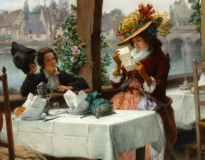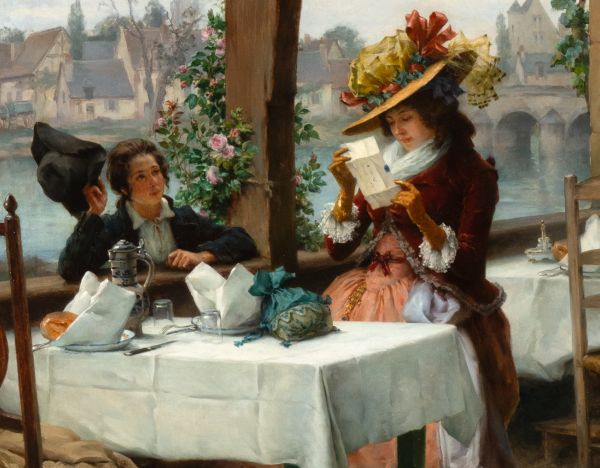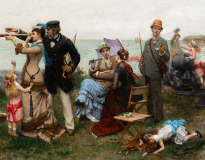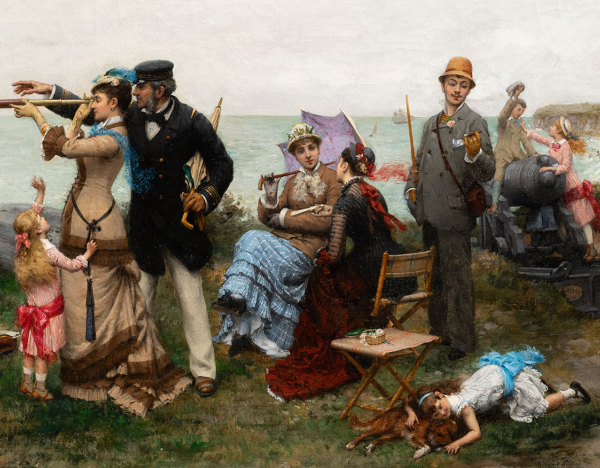Pierre Outin
( 1840-1899 )
Biography
Pierre Outin, born in 1840 in Moulins, was the son of a wealthy merchant. He studied at the Lycée de Moulins, where he learned the basics of drawing. Despite his father's disapproval of his artistic interests, he was sent to work in England. Still a minor, Pierre returned to Paris and found a job in a silk house, pleasing his father.
In 1861, after reaching the age of majority, Pierre decided to quit his job to pursue his passion for art. Thanks to the intervention of Charles Joseph Lecointe, a family friend and sculptor, he was admitted to the atelier of the renowned painter Alexandre Cabanel. Outin proved to be a talented student, winning first prize in the École des Beaux-Arts competition in 1863.
From 1868, Outin exhibited his first painting at the Salon des Artistes Français, revealing his inclination for historical genre scenes. He regularly participated in this prestigious salon from that point onward.
In 1874, Outin embarked on a long stay in Algeria, fascinated by the African land. He discovered vivid colors, unique luminosity, and oriental attire that enriched his palette upon his return to France. This influence was evident in his works, where his colors became richer and more nuanced.
Outin frequented La Nouvelle Athènes in Paris, a meeting place for many artists of his time, including Manet, Pissarro, and Goeneutte. During the Siege of Paris and the Commune, he settled in Auvers-sur-Oise with his friends, where he painted the portrait of his friend and painter Eugène Murer.
In 1880, his painting "Course d'Automne" made a sensation at the Salon, attracting public and critical attention, notably from Maurice Du Seigneur. He accumulated medals and mentions, culminating with his famous painting "Combat de Quiberon" in 1889, which placed him out of competition. That same year, he received an honorable mention for "Piété filiale."
Recognized during his lifetime, his works were purchased by art dealers such as Goupil and Valadon, as well as by English, American, and German collectors. Outin was known for his historical scenes, gallant genre scenes, and Orientalist paintings inspired by his stay in Algeria. These works are characterized by elegant composition and a rich and delicate palette, capturing the warm atmosphere of the Orient.
Pierre Outin died in 1899, leaving behind a rich and diverse artistic legacy. His talents as a draftsman and colorist continue to be appreciated in his works, which are preserved and admired worldwide.
93400 Saint-Ouen sur Seine



